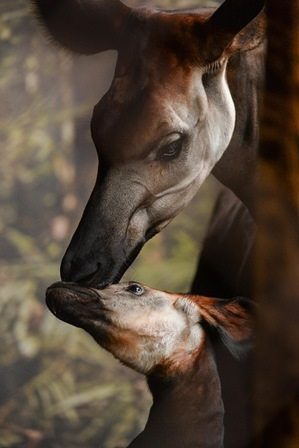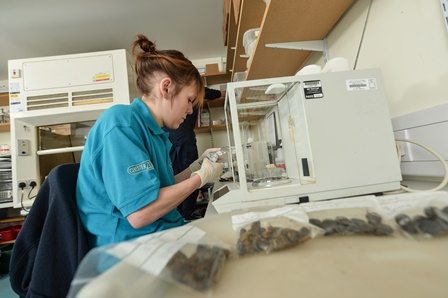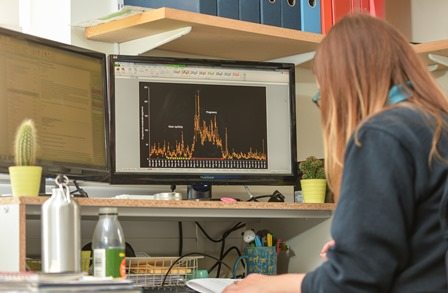
This method can tell us whether an animal has reached puberty, whether the animal’s menstrual cycle is regular and also predict the best time to introduce a potential breeding pair.
This knowledge can boost the number of successful pregnancies and contribute to the conservation of the species. We can also diagnose pregnancy and predict when the animal will give birth, giving the animal teams the necessary time time to make preparations for the mother and baby.
As we’ve mentioned before, we do this by collecting poo! It’s not the most glamourous of jobs, but it is an extremely important one!

Most of the species at Chester Zoo are part of breeding programmes. These programmes help to manage animals between different zoos as self-sustaining populations which is vital for those species that are on the brink of extinction in the wild. It provides an “insurance” population.
The animal care teams collect regular dung samples from their animals and send them to the lab for analysis. We are very proud that zoos from across Europe also send their samples to Chester to have their population management questions answered.
Although we can measure hormones using other bodily tissues and fluids, such as blood serum, urine and hair, poo is easily collected whilst cleaning enclosures and less intrusive for our animals. Our ground-breaking science has helped a number of births at the zoo including our latest black rhino calf whose arrival was predicted back in January 2015.

Not only do we contribute to the breeding success of animals in zoos but we are also involved in numerous research projects in the wild. We work with a number of collaborators whose research is dedicated to protecting endangered species through conservation breeding and management.
In March 2016, we hosted the Cheshire Breeding Symposium as part of the Britain is Great initiative. This event brought together specialists from around the world to discuss future directions for research in this field and our own head of applied science, Dr Sue Walker, delivered a talk on the reproductive management we do here at the zoo. Read more about the Conservation Breeding Symposium here.